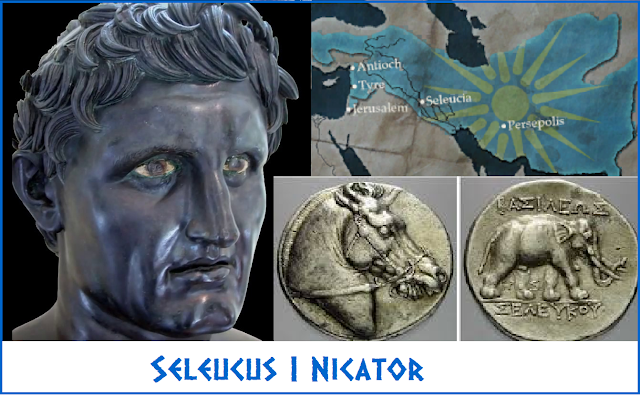In ancient times, trade between the Indian subcontinent and Greece flourished with silk, spices and gold being traded. The Greeks invaded South Asia several times, starting with the conquest of Alexander the Great and later with the Indo-Greek Kingdom.Yet,prior to mortal men,a Greek God had marched through India.
The expedition of Greek God Dionysus in Ancient India
One of the beloved children of Zeus, God Dionysus,is the first who discovered the cultivation of the vine and the mode of extracting its precious juice;but Hera struck Him with madness, and drove Him forth a wanderer through various parts of the earth. In Phrygia the Goddess Cybele, better known to the Greeks as Rhea, cured Him and taught Him Her religious rites, and He set out on a progress through Asia teaching the people the cultivation of the vine. The most famous part of His wanderings is His expedition to the Indian subcontinent, which is said to have lasted several years. When Alexander the Great reached a city called Nysa near the Indus river, the locals said that their city was founded by Dionysus in the distant past and their city was dedicated to the God Himself. These travels took something of the form of military conquests; according to Diodorus Siculus,he conquered the whole world except for Britain and Ethiopia.Returning in triumph ( Dionysus is considered the founder of the triumphal procession) He undertook to introduce His worship into Greece, but was opposed by some princes who dreaded its introduction on account of the ecstasy, and the liberating madness it brought with it (e.g. Pentheus or Lycurgus).
Conquests of Alexander the Great (327–326 BCE)
In 327 BCE, Alexander the Great began his foray into Punjab. King Ambhi, ruler of Taxila, surrendered the city to Alexander. Many people had fled to a high fortress/rock called Aornos. Alexander took Aornos by storm after a successful siege. Alexander fought an epic battle against the ancient Indian monarch Porus in the Battle of Hydaspes (326).
East of Porus' kingdom, near the Ganges River, was the powerful kingdom of Magadha, under the Nanda Dynasty.
According to Plutarch, at the time of Alexander's Battle of the Hydaspes River, Magadha's army further east numbered 200,000 infantry, 80,000 cavalry, 8,000 chariots, and 6,000 war elephants, which was discouraging for Alexander's men and stayed their further progress into the Indian subcontinent:
As for the Macedonians, however, their struggle with Porus blunted their courage and stayed their further advance into India. For having had all they could do to repulse an enemy who mustered only twenty thousand infantry and two thousand horse, they violently opposed Alexander when he insisted on crossing the river Ganges also, the width of which, as they learned, was •thirty-two furlongs, its depth •a hundred fathoms, while its banks on the further side were covered with multitudes of men-at‑arms and horsemen and elephants. For they were told that the kings of the Ganderites and Praesii were awaiting them with eighty thousand horsemen, two hundred thousand footmen, eight thousand chariots, and six thousand fighting elephants. And there was no boasting in these reports. For Androcottus, who reigned there not long afterwards, made a present to Seleucus of five hundred elephants, and with an army of six hundred thousand men overran and subdued all India.
--Plutarch, Parallel Lives, "Life of Alexander"
Seleucid (305 BCE)
Alexander's army mutinied along the Hyphasis, as Alexander died before he could make a conquest in fighting the Nanda Empire, making the Beas River the eastern extant of the Macedonian Empire.
Following Alexander's death, Seleucus I Nicator, founder of the Seleucid dynasty and former Diadochi, gained control over Mesopotamia and the eastern satraps of the former Macedonian Empire. Seleucus unsuccessfully tried to campaign in India by invading what is now Punjab in northern India and Pakistan in 305 BCE.
Meanwhile, in India, Chandragupta Maurya, the founder of the Mauryan Empire with the help of Chanakya his guru and political advisor, rose to power by overthrowing the Nanda Empire in Pataliputra. His next course of action was to lead his armies into the Indus to battle with the Seleucid Empire and annex the satraps. The Seleucid-Mauryan War waged on for over two years, resulting in significant territorial and political change in the region. To resolve the conflict both parties finally settled upon a marriage alliance. Chandragupta annexed the Greek satraps, while also gaining Seleucid's daughter in marriage. In exchange, Basileus Seleucus received 500 prized war elephants from the Indian Emperor, an asset which was used to decisively win the Battle of Ipsus.
Seleucus also sent an ambassador named Megasthenes to Chandragupta's court, who repeatedly visited Chandragupta's capital of Pataliputra (modern Patna in Bihar state). Megasthenes wrote detailed descriptions of India and Chandragupta's reign.
Continued diplomatic exchanges and good relations between the Seleucids and the Mauryan emperors are then documented throughout the duration of the Mauryan empire.
Indo-Greek rule
In 180 BCE, the Indo-Greeks, invaded parts of northwest and northern India and ruled in the Punjab region. They are an extension of the Greco-Bactrian dynasty of Greek kings (the Euthydemids) located in neighbouring Bactria.
The invasion of northern India followed the destruction of the Mauryan dynasty by the general Pushyamitra Shunga, who then founded the new Indian Shunga dynasty (185 BCE-78 BCE). The Indo-Greek king Menander may have campaigned as far as the capital Pataliputra in eastern India (today Patna): "Those who came after Alexander went to the Ganges and Pataliputra" (Strabo, XV.698).
The Indo-Greeks ruled various parts of north-western South Asia until the end of the 1st century BCE, when the Scythians and Kushans started rising into power.
Buddhism flourished under the Indo-Greeks, leading to the Greco-Buddhist cultural syncretism. The arts of the Indian sub-continent were also quite affected by Hellenistic art during and after these interactions.
Editet from Wikipedia





















No comments:
Post a Comment